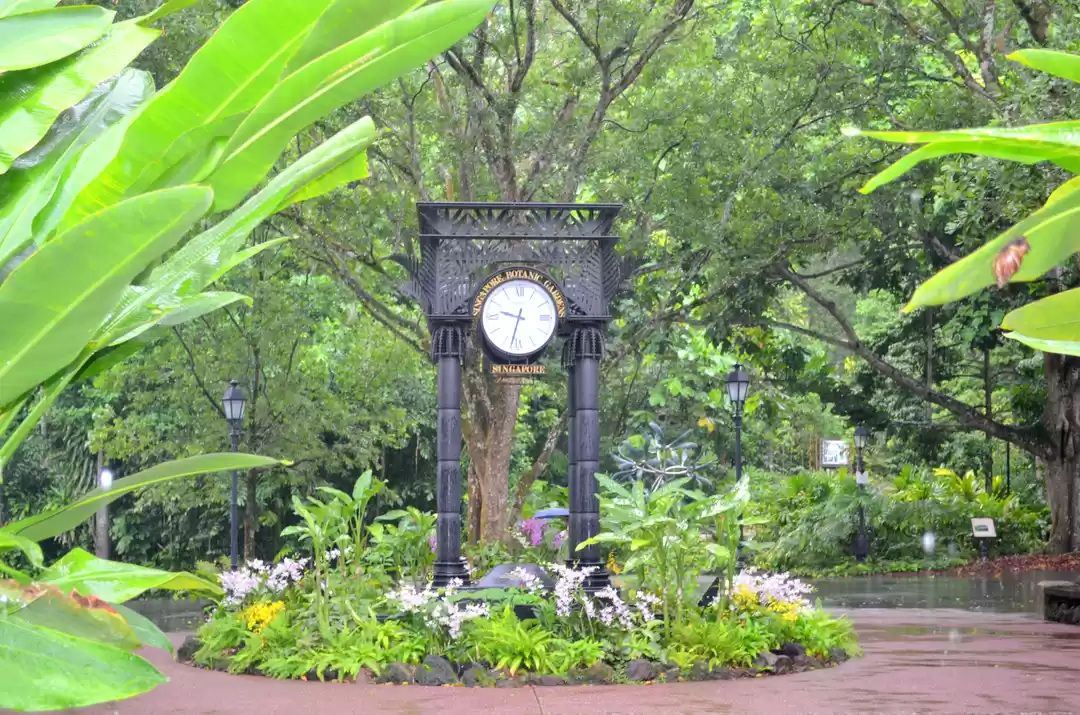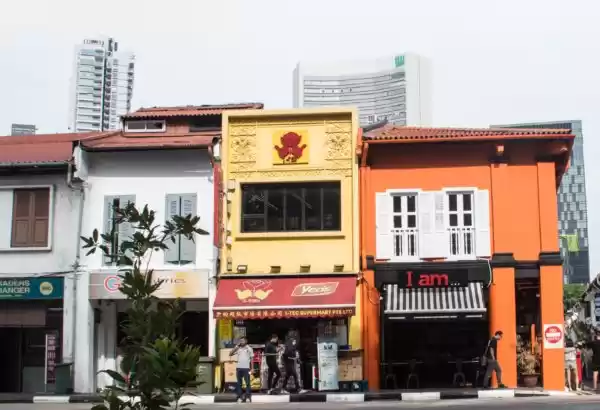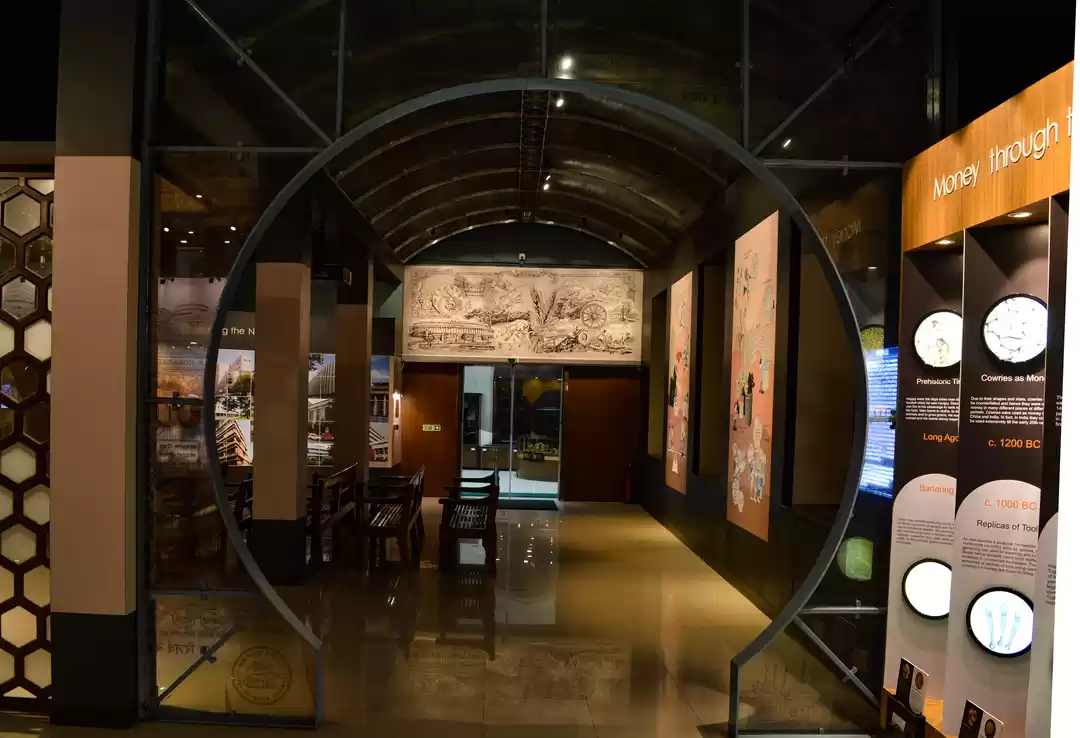If you are looking for a unique and fascinating cultural experience in Singapore, you should not miss the Peranakan Museum. This museum showcases the history, heritage, and lifestyle of the Peranakan community, also known as the Straits Chinese, who are the descendants of Chinese immigrants who married local Malays and Indians in Southeast Asia.
The Peranakan Museum is home to a stunning collection of Peranakan artefacts, such as clothing, jewellery, furniture, ceramics, and more, that reflect the hybrid and vibrant nature of Peranakan culture. You can also learn about the various aspects of Peranakan culture, such as language, religion, fashion, food, weddings, and public life, through interactive and multimedia exhibits.
Whether you are a history buff, a culture lover, or a curious traveller, you will find something to enjoy and appreciate at the Peranakan Museum.
What is Peranakan Culture?
The term ‘Peranakan’ means ‘locally born’ in Malay, and refers to the people who are of mixed Chinese and Malay or Indian ancestry. Peranakan culture is a fusion of Chinese, Malay and Indian influences, and has evolved over centuries of adaptation and integration. Peranakans have their own distinctive language, religion, fashion, food, weddings, and public life, which are different from both their Chinese and Malay counterparts.

Language: Peranakans speak a creole language called Baba Malay, which is based on Malay but incorporates words from Hokkien, Teochew, Cantonese, Tamil, and English. Baba Malay is also written in a modified version of the Roman alphabet, which includes diacritical marks to indicate tones and vowels.
Religion: Peranakans follow a syncretic form of religion, which combines elements of Buddhism, Taoism, Confucianism, Hinduism, Islam, and Christianity. Peranakans have their own temples, shrines, rituals, and festivals, which reflect their diverse religious beliefs and practices.
Fashion: Peranakans are known for their colourful and elaborate fashion, which is influenced by both Chinese and Malay styles. Peranakan women wear a traditional dress called kebaya, which consists of a fitted blouse and a long skirt, usually made of silk or cotton, and embroidered with floral or geometric patterns. Peranakan men wear a shirt called baju lokchuan, which is similar to a Chinese jacket, and a pair of trousers called chankay, which are tapered at the ankles. Peranakans also adorn themselves with jewellery, such as gold chains, brooches, earrings, and hairpins, which are often decorated with precious stones, pearls, or enamel.
Food: Peranakan cuisine is a blend of Chinese, Malay, and Indian flavours, and is characterized by the use of spices, herbs, coconut milk, and tamarind. Peranakan dishes are usually spicy, sour, and sweet, and include staples such as laksa, mee siam, ayam buah keluak, and kueh. Peranakans also have their own customs and etiquette for dining, such as serving food in a communal style, using chopsticks and spoons, and offering prayers before and after meals.
Weddings: Peranakan weddings are elaborate and extravagant affairs, which involve a series of ceremonies and rituals that span over several days. Peranakan weddings are influenced by both Chinese and Malay traditions, and include events such as the exchange of gifts, the betrothal ceremony, the tea ceremony, the bridal procession, and the wedding banquet. Peranakan weddings are also marked by the display of Peranakan artefacts, such as wedding beds, wedding baskets, wedding cakes, and wedding jewellery, which symbolize the union and prosperity of the couple.
Public life: Peranakans have contributed significantly to the social, economic, and political development of Singapore and other Southeast Asian countries. Peranakans have been involved in various fields, such as trade, education, journalism, law, medicine, and arts, and have produced many prominent figures, such as Tan Tock Seng, Lee Kuan Yew, Wee Kim Wee, and Dick Lee. Peranakans have also been active in promoting and preserving their culture, through associations, publications, festivals, and museums.
How to Experience Peranakan Culture at the Peranakan Museum
The Peranakan Museum is the best place to immerse yourself in Peranakan culture and learn more about its history and heritage. The Peranakan Museum is housed in a former Tao Nan School building, which is a conserved neoclassical building and a National Monument. The Peranakan Museum has ten permanent galleries, which cover various aspects of Peranakan culture, such as origins, religion, language, fashion, food, weddings, public life, and contemporary art. You can explore the galleries at your own pace, or join a guided tour or a workshop to enhance your experience. Here are some of the highlights of the Peranakan Museum:

Origins Gallery:
This gallery introduces the origin and meaning of the term ‘Peranakan’, and the history and migration of the Peranakan community in Southeast Asia. You can see a map of the Peranakan diaspora, a timeline of Peranakan history, and a display of Peranakan identity cards and passports.
Religion Gallery:
This gallery showcases the diverse and syncretic religious beliefs and practices of the Peranakan community, and the influence of Buddhism, Taoism, Confucianism, Hinduism, Islam, and Christianity on Peranakan culture. You can see a replica of a Peranakan temple, a collection of Peranakan religious artefacts, such as altars, statues, scrolls, and amulets, and a video of Peranakan religious ceremonies and festivals.
Language Gallery:
This gallery explores the unique and distinctive language of the Peranakan community, which is Baba Malay, a creole language based on Malay but incorporating words from other languages. You can see a display of Peranakan literature, such as books, magazines, newspapers, and comics, written in Baba Malay, and a video of Peranakan speakers and singers. You can also try to learn some Baba Malay words and phrases, and test your knowledge with a quiz.
Fashion Gallery:
This gallery displays the colourful and elaborate fashion of the Peranakan community, which is influenced by both Chinese and Malay styles. You can see a collection of Peranakan clothing, such as kebaya, baju lokchuan, and chankay, and Peranakan jewellery, such as gold chains, brooches, earrings, and hairpins. You can also try on some Peranakan costumes and accessories, and take a photo of yourself.
Food Gallery:
This gallery celebrates the delicious and diverse cuisine of the Peranakan community, which is a blend of Chinese, Malay, and Indian flavours. You can see a replica of a Peranakan kitchen, a display of Peranakan utensils, such as pots, pans, bowls, and spoons, and a video of Peranakan cooking and dining. You can also smell some Peranakan spices and herbs, and taste some Peranakan snacks and sweets.
Wedding Gallery:
This gallery showcases the elaborate and extravagant weddings of the Peranakan community, which involve a series of ceremonies and rituals that span over several days. You can see a replica of a Peranakan wedding bed, a display of Peranakan wedding artefacts, such as wedding baskets, wedding cakes, and wedding jewellery, and a video of Peranakan wedding ceremonies and rituals. You can also join a mock Peranakan wedding, and play the role of a bride, groom, or guest.
Public Life Gallery:
This gallery highlights the contributions and achievements of the Peranakan community in various fields, such as trade, education, journalism, law, medicine, and arts. You can see a display of Peranakan memorabilia, such as medals, certificates, diplomas, and awards, and a video of Peranakan personalities and stories. You can also learn more about the Peranakan associations, publications, festivals, and museums that promote and preserve Peranakan culture.
Contemporary Art Gallery:
This gallery features the works of contemporary Peranakan artists, who express their Peranakan identity and culture through various mediums, such as painting, sculpture, photography, and installation. You can see a collection of Peranakan artworks, such as portraits, landscapes, abstracts, and collages, and a video of Peranakan artists and their inspirations. You can also create your own Peranakan artwork, and share it with others.
The History and Architecture of the Peranakan Museum
The Peranakan Museum has a rich and interesting history and architecture, which reflect its role and significance in Singapore’s cultural landscape. The Peranakan Museum was established in 1997, as a branch of the Asian Civilisations Museum, and was originally located at the Old Tao Nan School building, which is a former school and a National Monument. The Peranakan Museum moved to its current location at the Empress Place Building in 2003, and expanded its collection and exhibition space. The Peranakan Museum closed for restoration works in 2019, and is expected to reopen in 2022.
Empress Place Building:
The Empress Place Building is a neoclassical building and a National Monument, which was built in 1865 as a court house, and later served as a government office, a museum, and a concert hall. The Empress Place Building has a symmetrical facade, a portico with Ionic columns, and a dome with a clock tower. The Empress Place Building also has a rich collection of sculptures, paintings, and murals, which depict the history and culture of Singapore and Southeast Asia.
Old Tao Nan School:
The Old Tao Nan School is a former school and a National Monument, which was built in 1910 as the first modern Chinese school in Singapore, and later served as a Japanese military base, a Malay school, and a heritage centre. The Old Tao Nan School is based on the design of Straits Settlements bungalows, which are single-storey buildings with pitched roofs, verandas, and louvred windows. The Old Tao Nan School also has a distinctive Peranakan Museum logo, which is a stylized version of the Chinese character for ‘eight’, which represents the eight founding members of the school.
How to Plan Your Visit to the Peranakan Museum
If you are interested in visiting the Peranakan Museum, here are some useful information and tips to help you plan your visit:
Address and map: The Peranakan Museum is located at 39 Armenian Street, Singapore 179941. You can see the map of the Peranakan Museum below, and get directions and options to reach the museum by public transport, car, or taxi.
Admission fee and timings: The Peranakan Museum is currently undergoing restoration works and is closed to the public from 1 April 2019. The Peranakan Museum is expected to reopen in 2022, with a new and improved exhibition space and collection. You can visit the official website of the Peranakan Museum for more information and updates on the restoration works and the reopening date. The admission fee and timings of the Peranakan Museum will be announced closer to the reopening date.
Tours and workshops: The Peranakan Museum offers a variety of tours and workshops for visitors, such as guided tours, self-guided tours, audio tours, family tours, school tours, and special tours. The tours and workshops are designed to enhance your experience and understanding of the Peranakan culture and the Peranakan Museum. You can visit the official website of the Peranakan Museum for more information and booking of the tours and workshops.
Official website and tickets: The official website of the Peranakan Museum is https://www.peranakanmuseum.org.sg/, where you can find more details and information about the Peranakan Museum and its collection, exhibitions, events, and activities. You can also buy tickets for the Peranakan Museum online, and enjoy discounts and benefits. You can also follow the Peranakan Museum on social media, such as Facebook, Instagram, and Twitter, and stay updated on the latest news and happenings of the Peranakan Museum.
The Peranakan Museum is a cultural treasure in Singapore, which showcases the history, heritage, and lifestyle of the Peranakan community, also known as the Straits Chinese, who are the descendants of Chinese immigrants who married local Malays and Indians in Southeast Asia. The Peranakan Museum is home to a stunning collection of Peranakan artefacts, such as clothing, jewellery, furniture, ceramics, and more, that reflect the hybrid and vibrant nature of Peranakan culture. You can also learn about the various aspects of Peranakan culture, such as language, religion, fashion, food, weddings, and public life, through interactive and multimedia exhibits.
The Peranakan Museum also has a rich and interesting history and architecture, which reflect its role and significance in Singapore’s cultural landscape. The Peranakan Museum is a popular and well-reviewed attraction in Singapore, which has received many positive feedbacks and ratings from visitors. The Peranakan Museum is currently undergoing restoration works and is closed to the public from 1 April 2019, and is expected to reopen in 2022, with a new and improved exhibition space and collection. You can visit the official website of the Peranakan Museum for more information and updates on the restoration works and the reopening date, and to buy tickets for the Peranakan Museum.
The Peranakan Museum is a must visit for anyone who is interested in the history and culture of Singapore and Southeast Asia, and who wants to experience a unique and fascinating cultural experience. Whether you are a history buff, a culture lover, or a curious traveller, you will find something to enjoy and appreciate at the Peranakan Museum.
Don’t miss this opportunity to discover the rich and diverse culture of the Straits Chinese in Singapore!
























